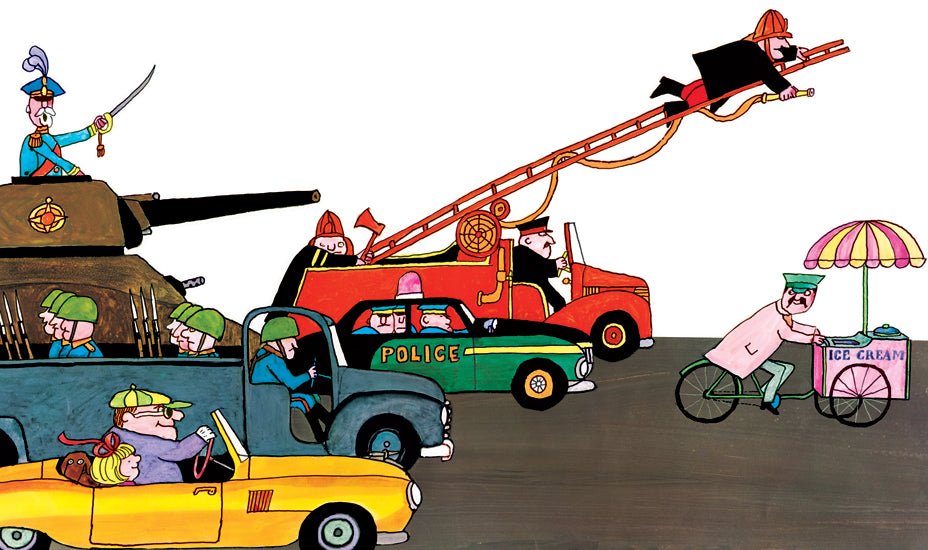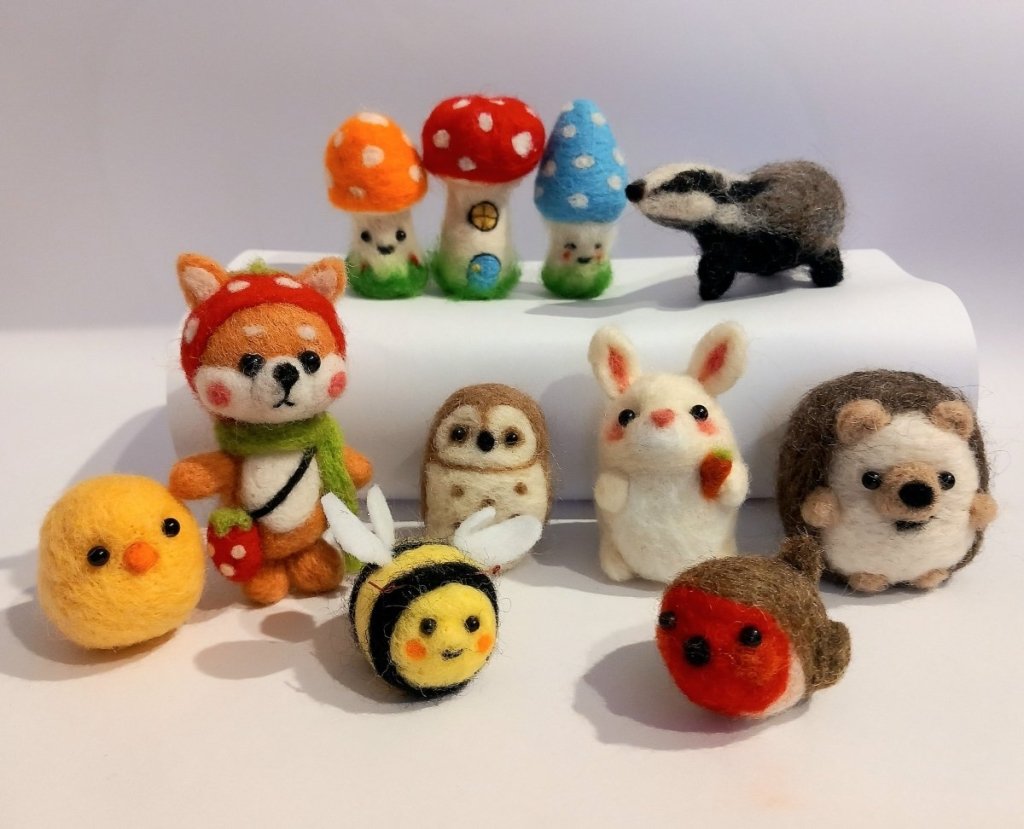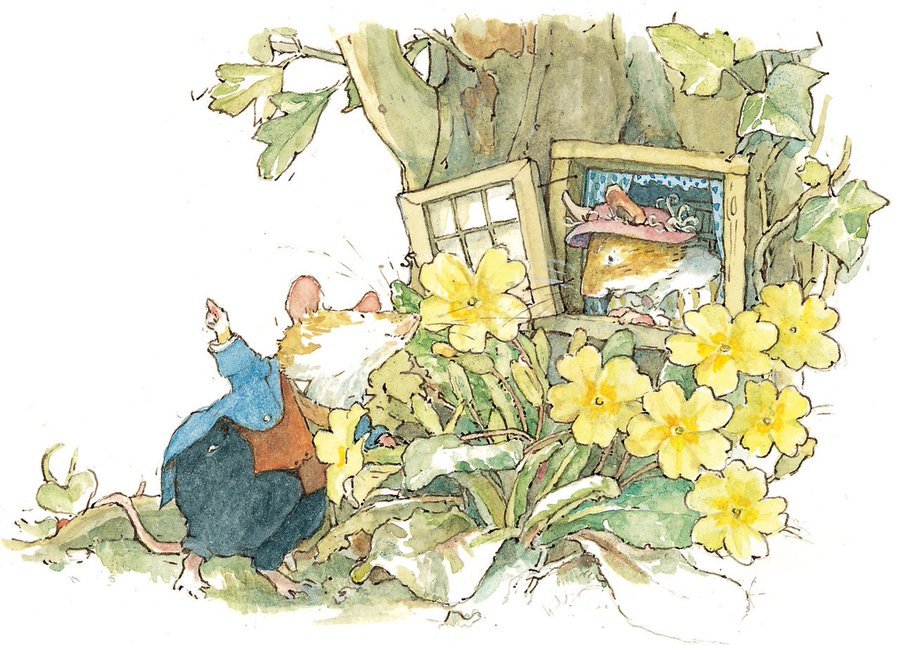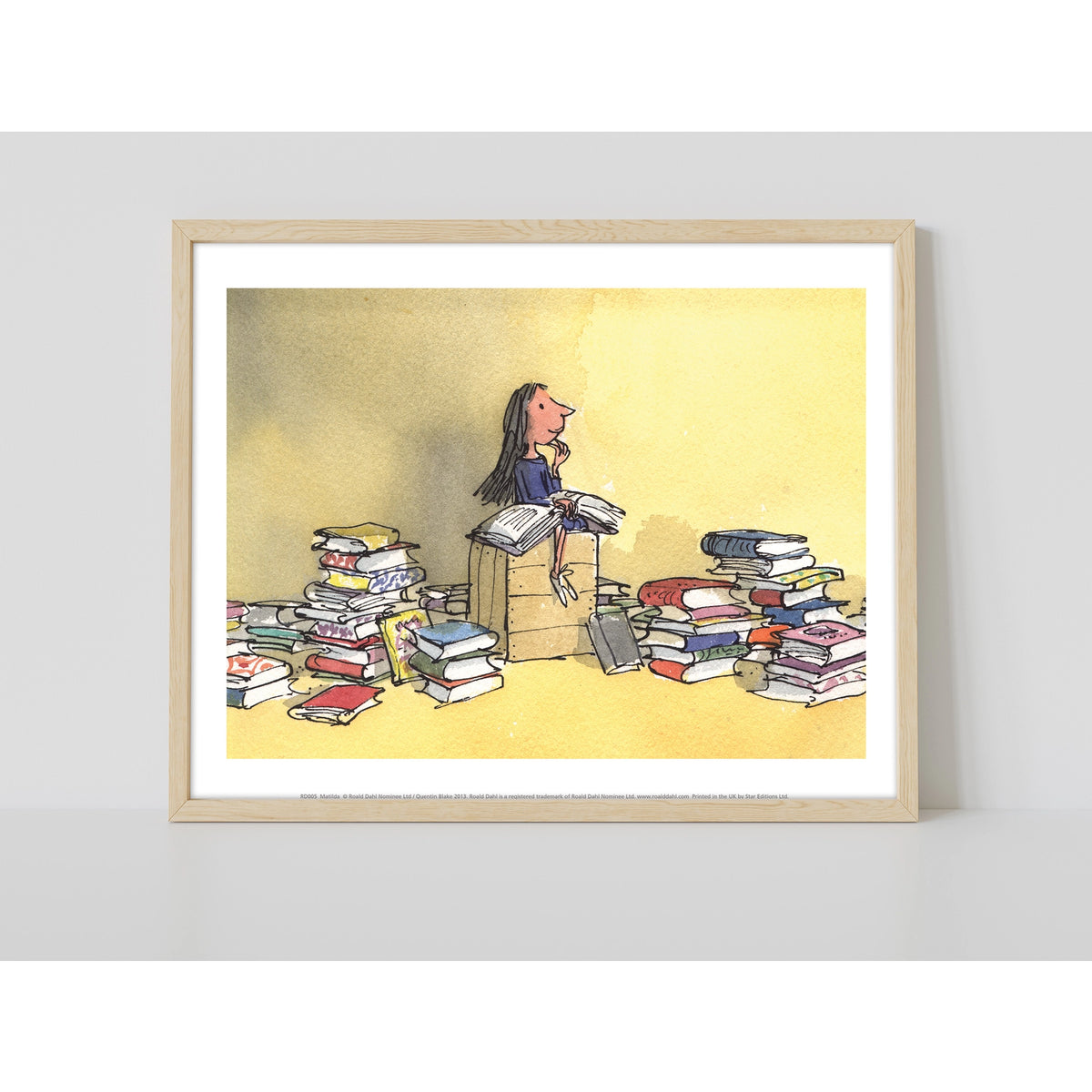Illustrator of the Month: Tomi Ungerer

Our new ‘Illustrator of the Month’ blog series focuses on some of our favourite illustrators, their lives and their works. This is a chance to learn more about the lives of the people who illustrated your favourite books, the influences that shaped their art style and storytelling, and some of their lesser known projects.
Last month we started with the brilliant Jon Klassen. Up next it’s the subversive, whimsical and extraordinary Tomi Ungerer!
Tomi Ungerer is a French cult illustrator who was part of the turn towards more unusual and edgy children’s books in the US in the sixties. He started out in advertising and quickly gained a reputation for his visual playfulness and his bold experimental style, which was at the time wildly different from the traditional and homely style of many American magazine illustrators. He became one of the most prolific and popular children’s author-illustrators of that decade, but for a time his boundary-pushing art became too much for the establishment and he is only recently reclaiming the level of recognition that he deserves.
Absurd humour for absurd humanity
Tomi grew up in Strasbourg in the Alsace region of France. As a young child he witnessed occupation under the Nazi regime, which he says has had a huge influence on his outlook on life, and on his work. His books are known both for their sense of social justice and for their absurd humour, and both of these sensibilities were influenced by what Tomi witnessed during the war and after liberation. He speaks in the brilliant documentary Far Out Isn’t Far Enough: The Tomi Ungerer Story, about the absurdity of war and how he always felt caught between two identities, as Alsace straddles the border of France and Germany.
When Alsace was liberated the city of Strasbourg rejoiced, but soon afterwards the French liberationists burned all of the classic German books in the library. The hypocrisy and contradiction of these actions made a young Tomi keenly aware of the absurdity of humanity, so his books combine a strong sense of morality with a darkly satirical humour.
Growing up under the Nazis gave Ungerer a sense of fear that never fully left him and some of his best known books explore this sense of anxiety and unbelonging. Otto: the Autobiography of a Teddy Bear tells the story of a bear belonging to a Jewish boy, who loses contact with his owner during the World War II. Even though it is told through the voice of a teddy bear and has a happy ending, this is no cutesy story, and it doesn’t try to conceal the brutalities of war. Ungerer writes in the Tomi Ungerer Treasury that “children should be exposed to what war is like as early as possible. If you don’t share stories like this, how are you going to bring awareness?” For Ungerer, the only way to change things for the better is to educate younger generations on injustice, so that they will grow up seeking to improve a flawed world. 
Searching for belonging
Ungerer’s adventurous spirit meant he soon left his native patch seeking opportunity and new experiences. In 1956 he touched down in New York City and began seeking work as an illustrator. In the days before television, illustration was big business in newspapers and magazines, and he trawled his way round publishers’ art departments with a box full of drawings until he found work.
He quickly built up a reputation for his witty imagination and bold graphic style, and it wasn’t long until he made the transition to children’s books. This was fertile ground for Ungerer with his childlike ability to see through the contradictions of the adult world. Books such as The Mellops series, The Three Robbers and Adelaide were a wild success and for years he was one of the leading children’s authors in America.
This was a boom-time for bold and innovative children’s illustration, with other author-illustrators like Maurice Sendak (who called Tomi Ungerer a “spectacular graphic genius”), also challenging the accepted modes of children’s books in both subject and style. While the trend in recent years had been for sweet and cuddly stories like Goodnight Moon and Harold and the Purple Crayon, Ungerer favoured characters and animals that no one else would think to make the hero of a children’s book; bats, vultures, octopuses and snakes all became lovable protagonists.
His stories thus teach us that everyone has something to bring to the table, and that when you tap into your unique and authentic self you can reach your full potential. Take Emile, the octopus, who because of his many arms makes an excellent multi-instrumentalist.
Tomi’s experiences as an immigrant in New York inspired one of his most beloved books. Moon Man tells the story of the man in the moon visiting earth to join in the fun, only to find that he is treated as an invader and thrown into jail! The Moon Man is just looking for a place to fit in where he can have some company and enjoy the fruits of our planet, but the government officials of earth want to keep tight control of borders and distrust any form of difference. Written during the Cold War, the story is as relevant today as when it was first published. Children who read this book will pick up on its message about welcoming and respecting differences and newcomers, without it having to be spelled out. Ungerer’s work never talks down to children, but has utmost respect for their natural sense of curiosity and exploration.
Ungerer packs a lot of punch into his stories but the actual word count is often minimal; he lets the pictures take a leading role. Moon Man features double page spreads of colourful pen and ink paintings. The illustrator uses tempera, a method of painting with pigment mixed in a solution, so that his illustrations are textured with brushstrokes, ink bubbles and streaks of colour. The gentle blue wash of the shimmering Moon Man emphasises his gentleness in contrast with the bold and brash colours of the earth upon which he has landed.
Tomi Ungerer’s illustration always retains a sense of playfulness, even when dealing with serious themes. He draws things that children love to draw, like boats, cars and furry animals, and his scenes are full of hidden detail that can be pored over again and again. In The Beast of Monsieur Racine, a “retired tax collector”, (who else would make a tax-collector the hero of a children's story?!), makes friends with a mysterious beast. The book is full of chaotic crowd scenes which give Ungerer full scope to insert myriad little jokes and references, like a newspaper headline about his friend Maurice Sendak, or a vagabond carrying a spare foot in his bindle - because he has to do so much walking! As well as always appealing to children, his work reminds adults how fun life can be if you can let go and face everything with a wry sense of humour.
A stirred pot boils over
Ungerer’s wry outlook on the world fed into his work beyond picture books too. While the age of revolutions and upheavals was turning the world upside down in the sixties, Ungerer could not sit back and watch, and he used his talents to draw attention to injustice. He created a series of anti-Vietnam War posters that are still as affecting today as they were when they were first appeared.
In Far Out Isn’t Far Enough: The Tomi Ungerer Story, Ungerer states that the Nazi propaganda that saturated his youth under occupation actually fed into his design sensibilities. He learned that bold posters can be dangerously effective in getting a message across, but his message was always one of disdain for the political powers of war and destruction.

In an age before the internet ensured that everyone knows everything about everybody, Ungerer was able to work on political projects, satirical cartoons, subversive erotica and popular children’s books, all at the same time! However, eventually the balance between the mollycoddled world of children’s books and the edginess of his other works boiled over, and he was ostracised from the children’s book world. No bookshops would stock his work, he was blacklisted from libraries, and he found himself adrift in a world that had previously embraced him. His love affair with New York had ended and Ungerer set sail again, this time for a complete change of lifestyle, to rural Nova Scotia.
Far Out Isn’t Far Enough
In 1971 Ungerer moved with his wife Yvonne to an extremely remote part of Canada, and set about creating a self-sufficient life in the countryside. He documented this in drawings of course, and the muted tones of rural Nova Scotia introduced a new element to his drawing. He sketched the animal life and the landscapes surrounding him, as well as the people of the town and its dilapidated buildings. These illustrations and his diary entries from the time are collected in a memoir called Far Out Isn’t Far Enough: Life in the Back of Beyond.

This book is an unflinchingly honest account of what life is really like in a harsh rural environment and, true to form, Ungerer doesn’t shy away from depicting the more unpalatable elements of the lifestyle. With more than 150 illustrations, the memoir truly shows what a prolific illustrator Ungerer was and still is. He has spoken in the past about how he would sometimes create a whole book in just a single day!
Finding a home in Ireland
When Ungerer and his wife decided to have children, they realised that their Canadian farm was not the right environment to raise them in. They moved on again, finally settling on the Emerald Isle. The illustrator lives in Cork to this day, and is openly expressive of his fondness for Ireland and its people.
After a long hiatus from children’s books following his fall from favour in the industry, he returned to picture book making with Flix in 1997. Flix is the story of a dog born into a cat family, and reflects the identity dilemma of Ungerer’s upbringing in a Germanic region of France. Ungerer had been doing a lot of work for German-French relations in the intervening years since moving back to Europe, and Flix again shows his knack for subtly reinforcing a message of peace and unity all within an outrageous and funny story.
Since returning to picture books, Ungerer has rekindled his imaginative fire. One of his most recent books Fog Island is a love letter to Ireland, dedicated to the country and the people who so warmly welcomed Ungerer and his family. Though published only in 2013, the book has the feel of an old classic. Ungerer is still creating the kind of stories that feel like they’ve always been part of your life.
In Fog Island, two children in the west of Ireland discover an abandoned island with eerie faces carved into the cliffs. There they meet the mysterious man who makes the fog that hovers over the Atlantic!
With so varied, playful and subversive a body of work, Tomi Ungerer has earned his place among the greatest picture book makers of all time. He has always had a strong cult following, but since the release of the aforementioned documentary and Phaidon’s high-quality reissues of his books, he is getting more of the recognition he deserves in his adopted country. His compassionate outlook is an important one for children to absorb as they grow, and his infectious humour will remind adults what it was like to be a giggly child enjoying the simplicity of its creative freedom.
View our full range of Tomi Ungerer's books here.










